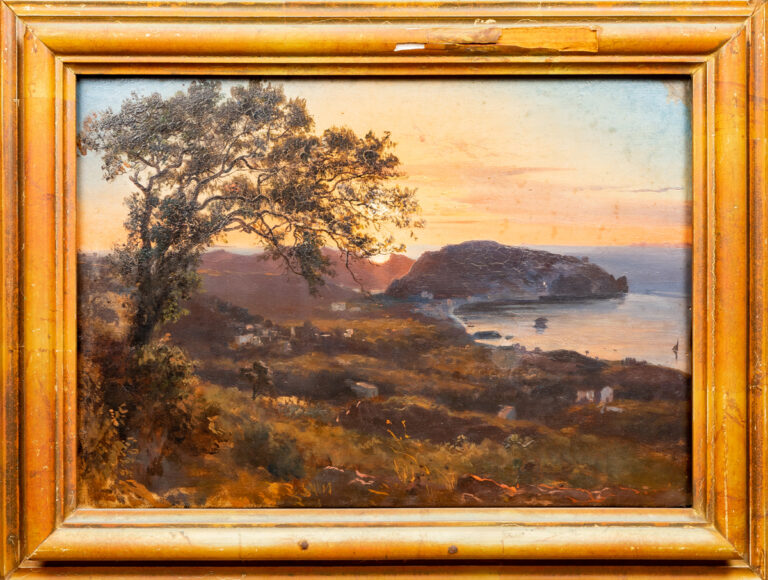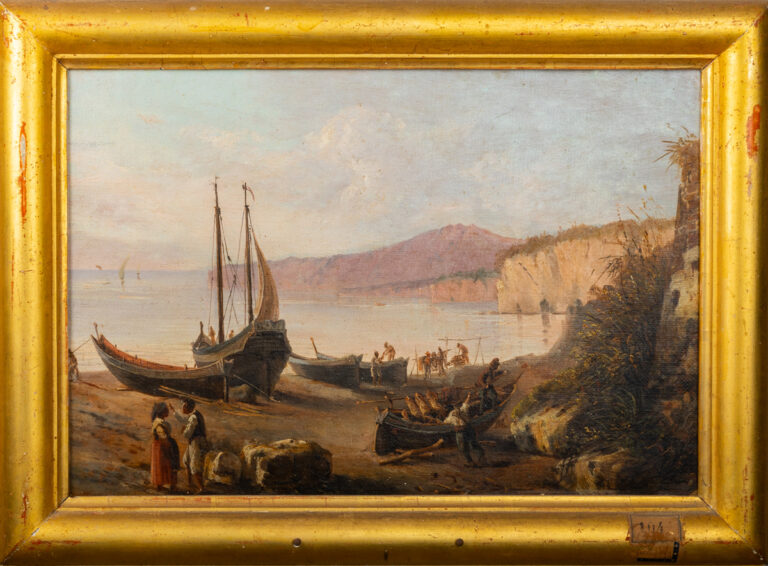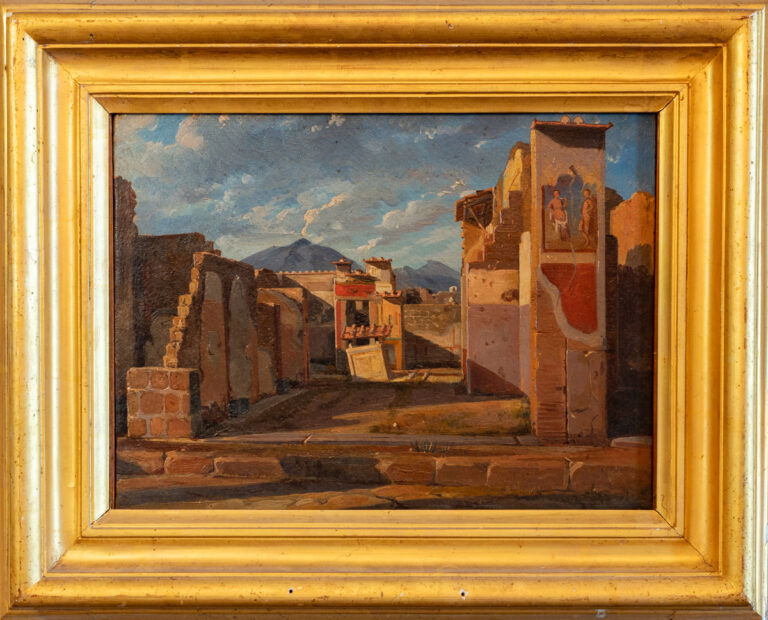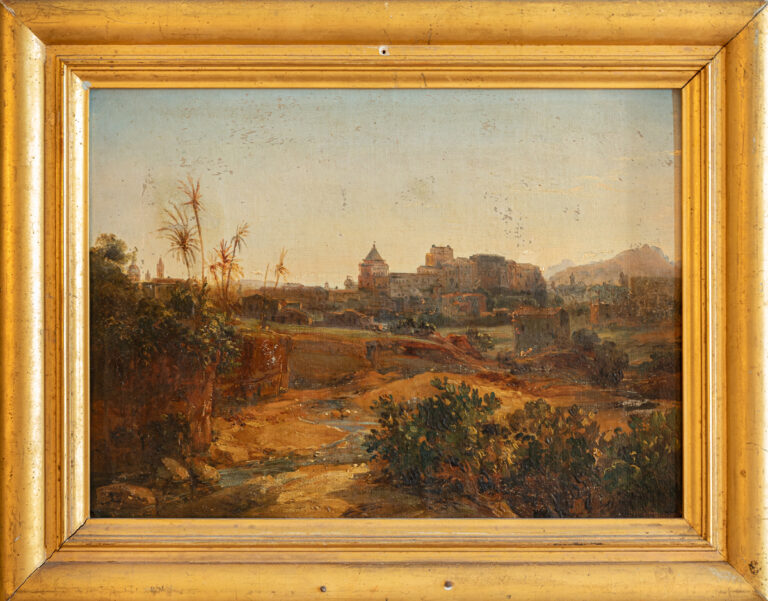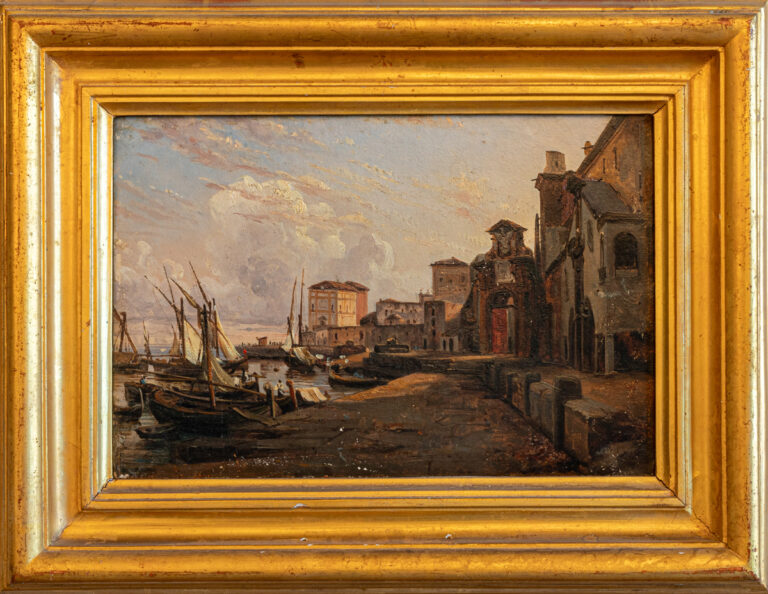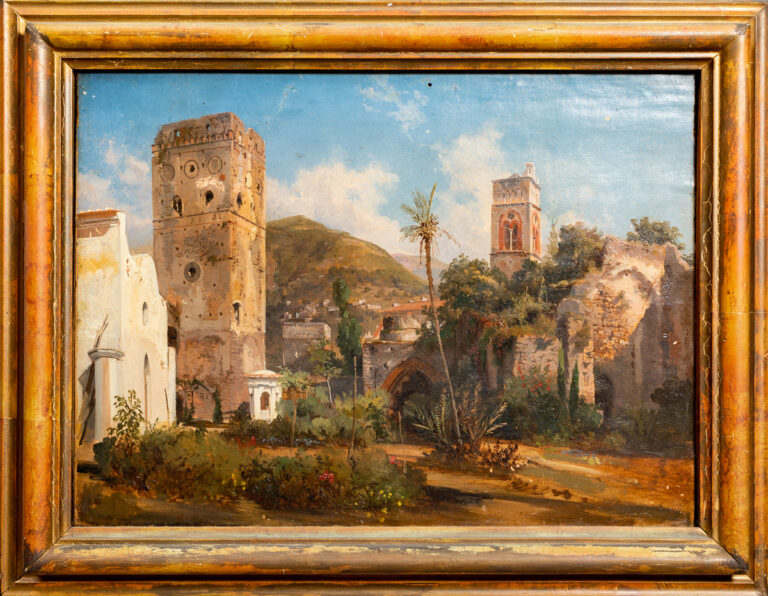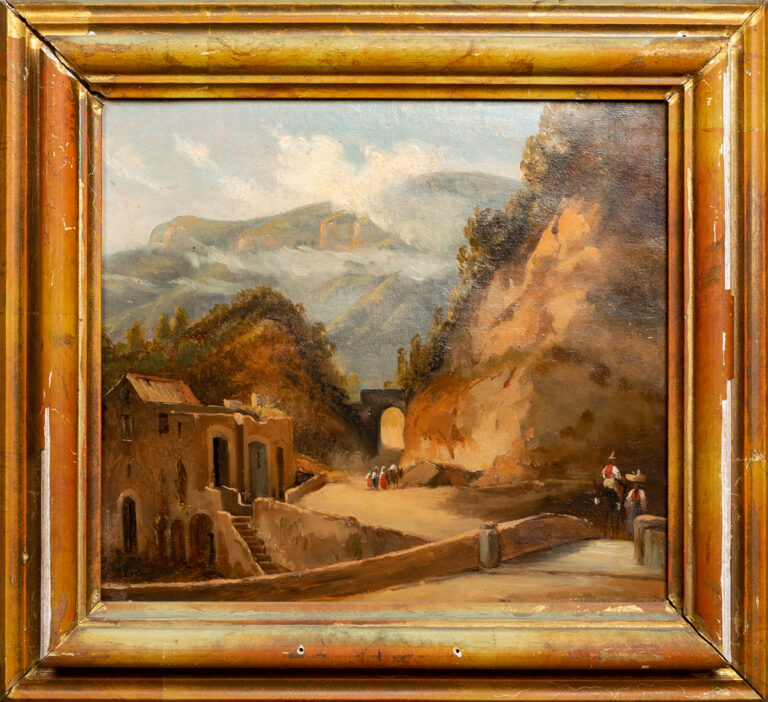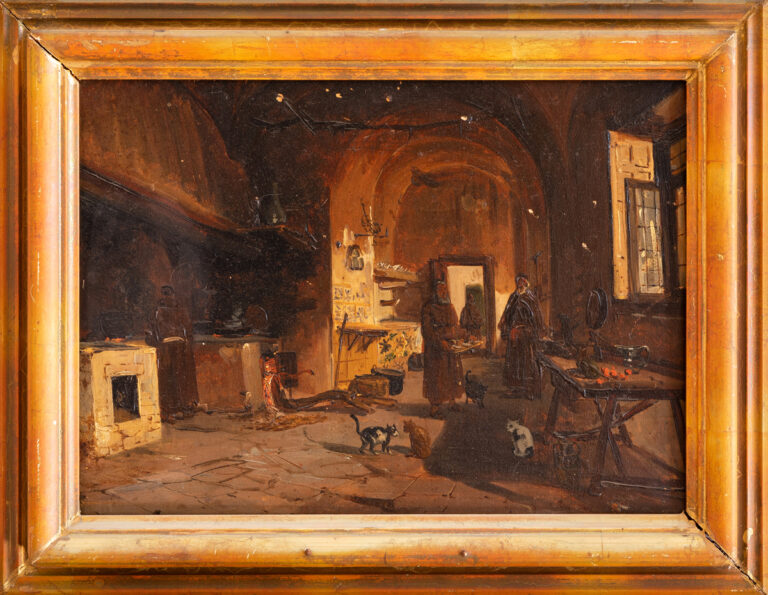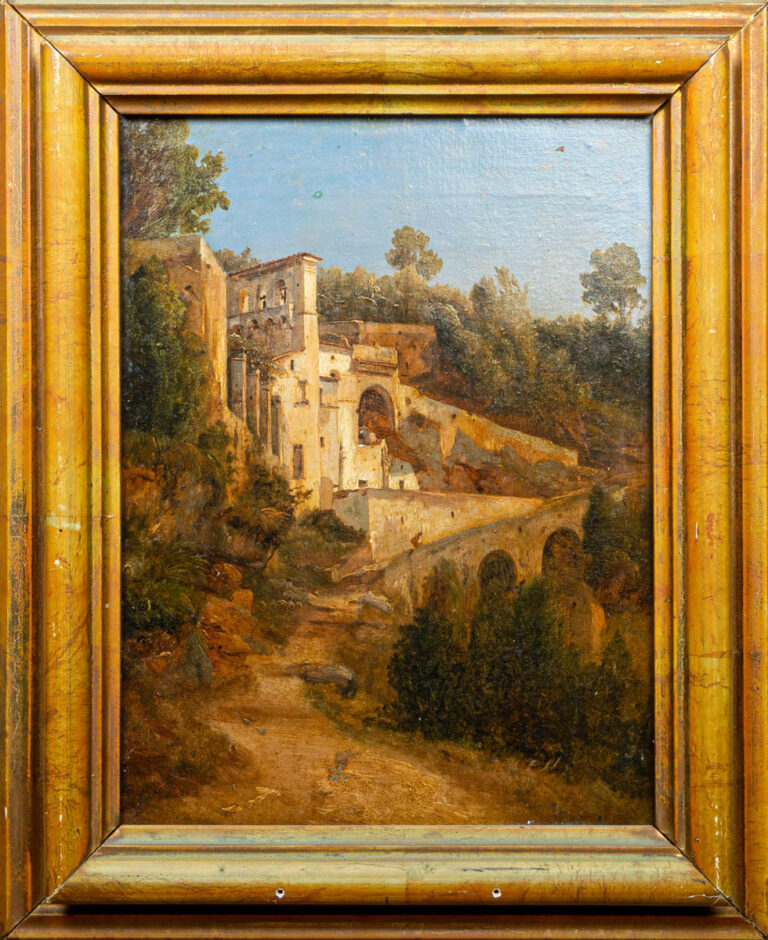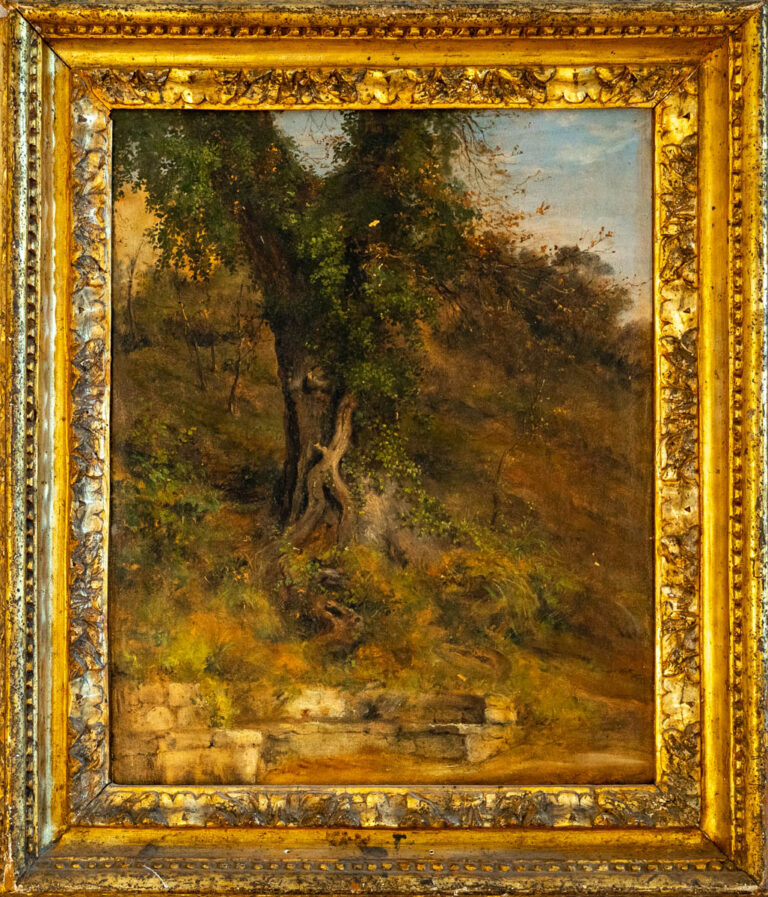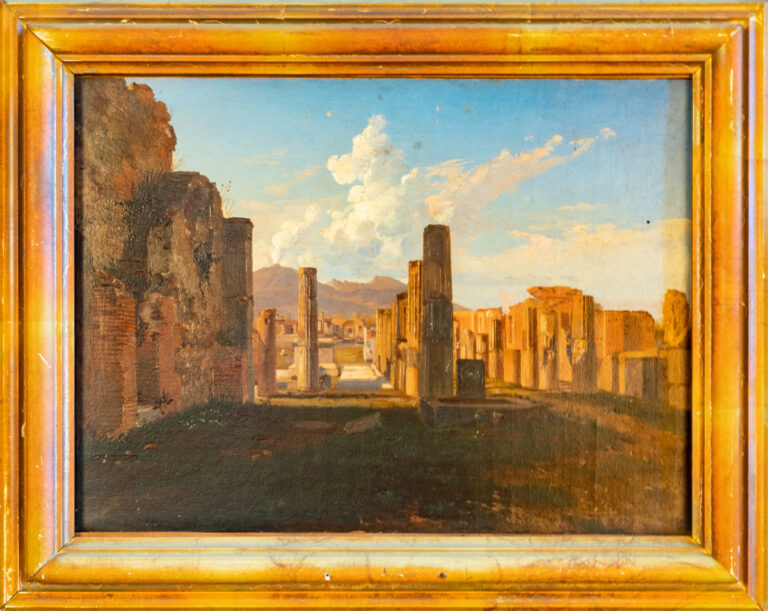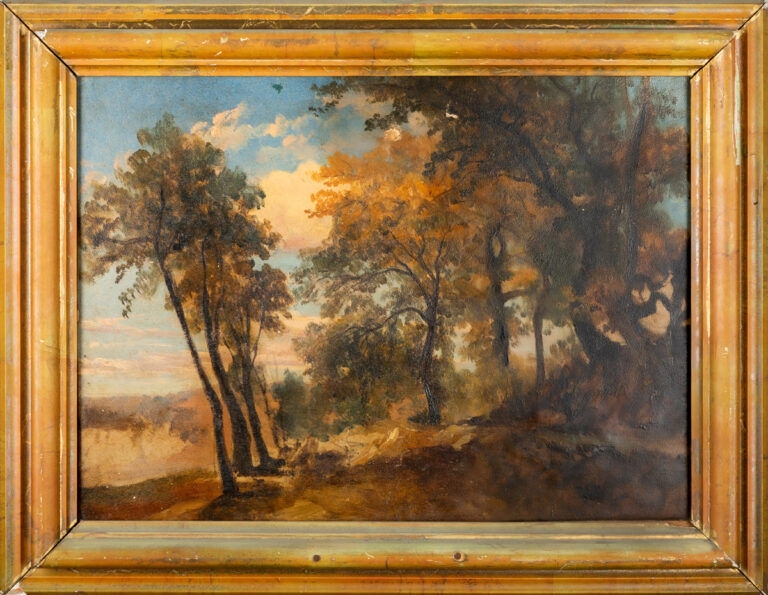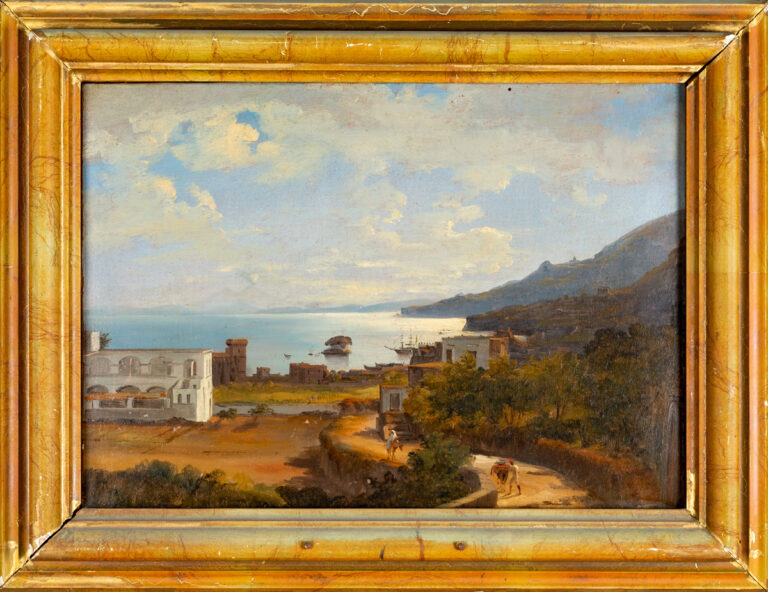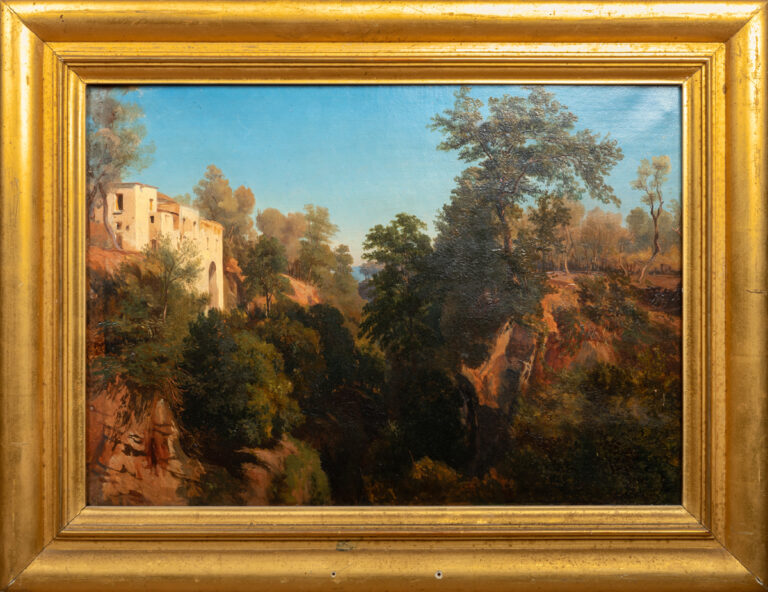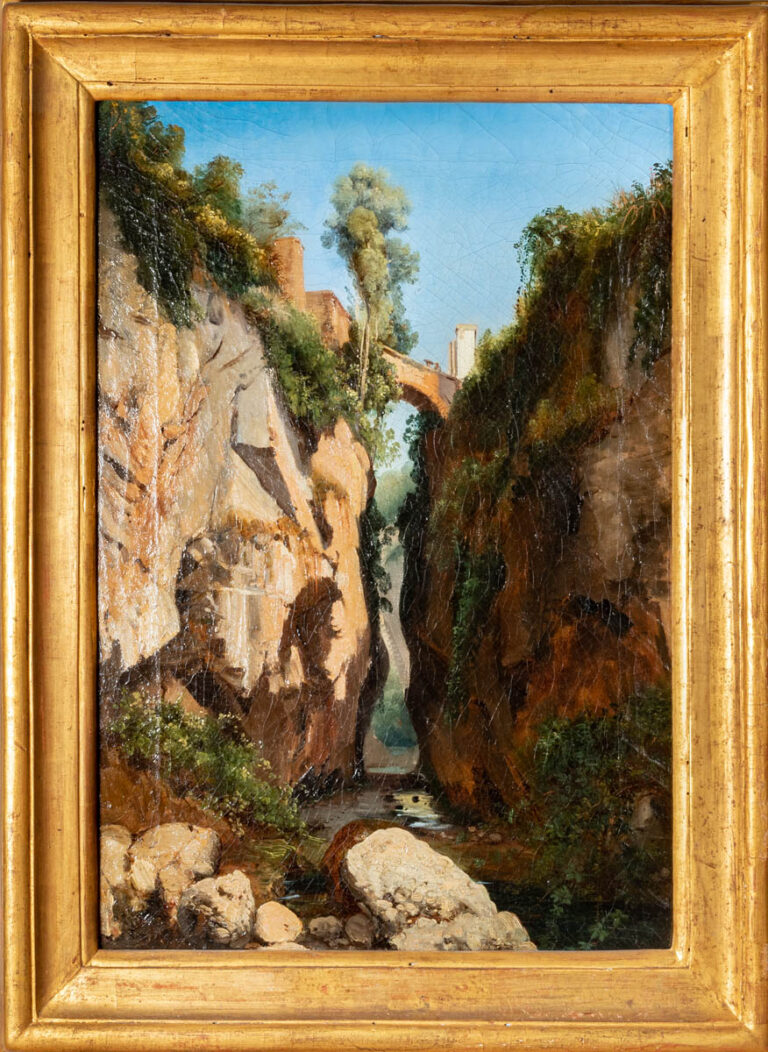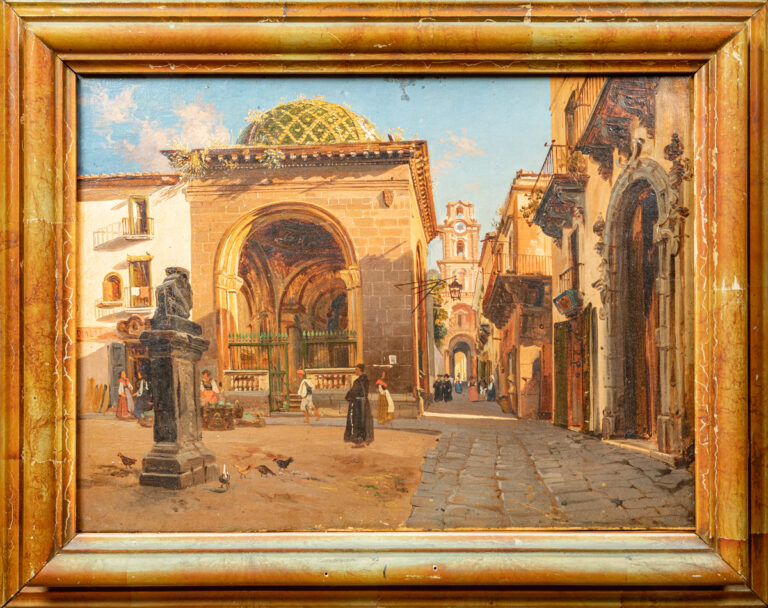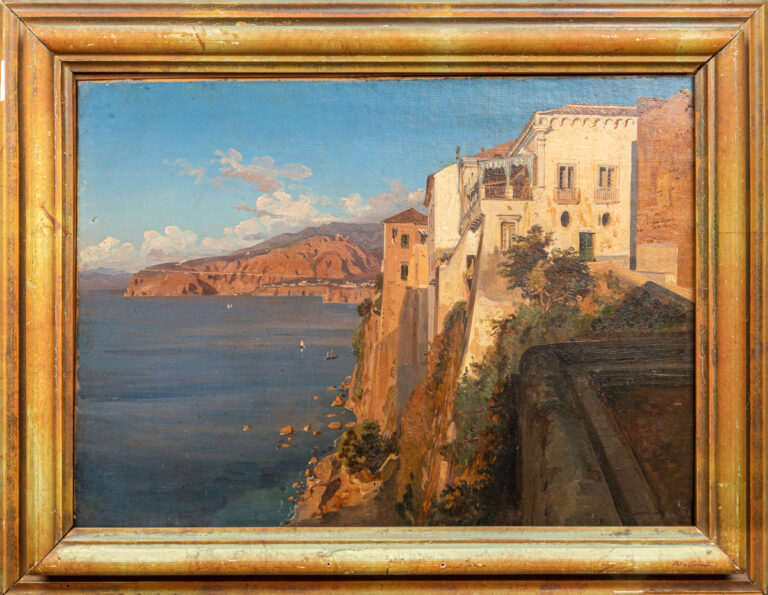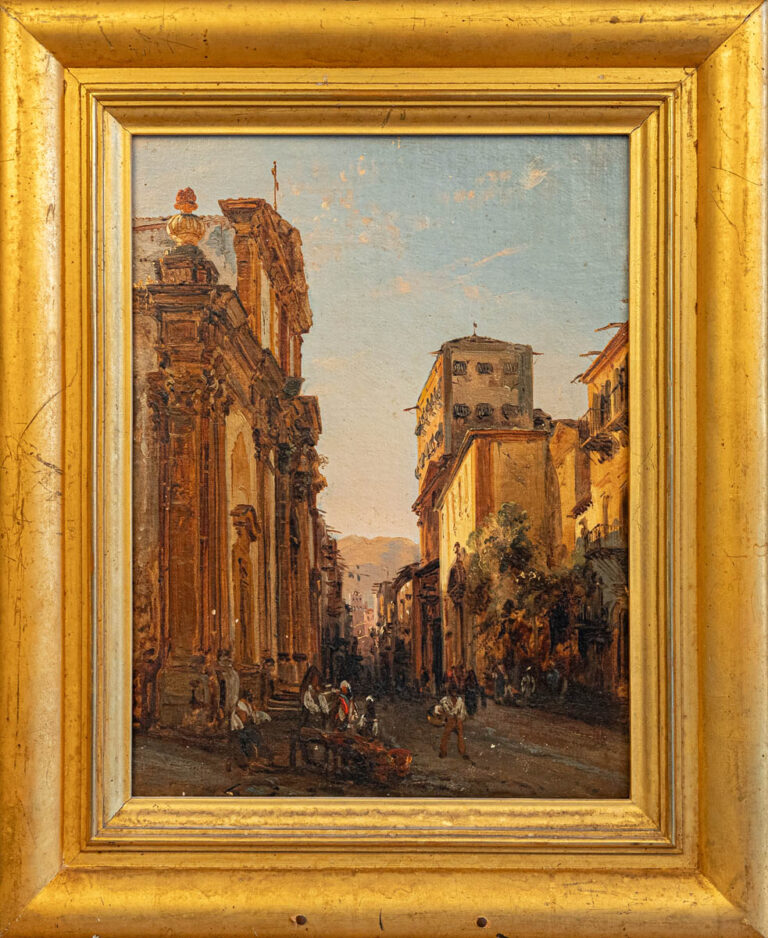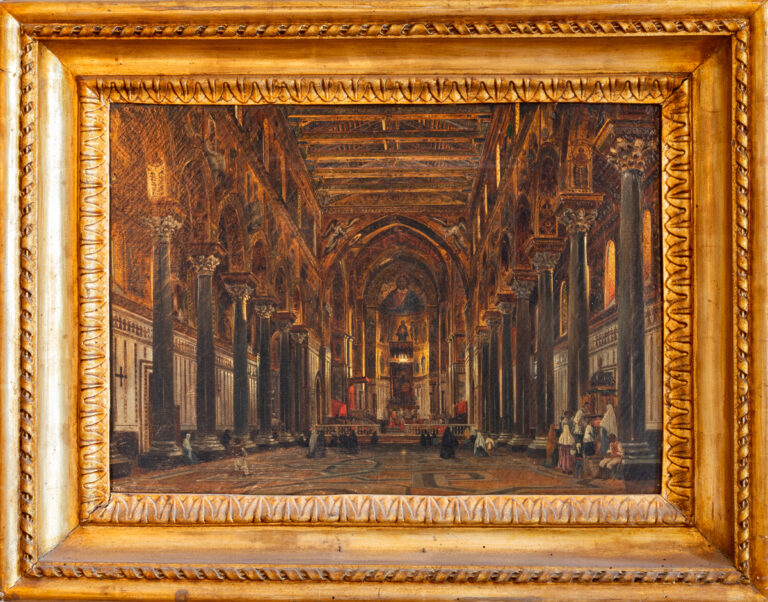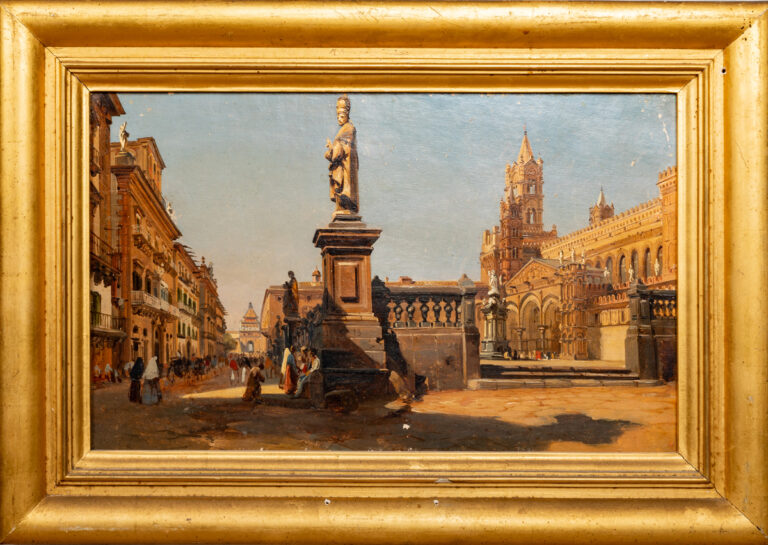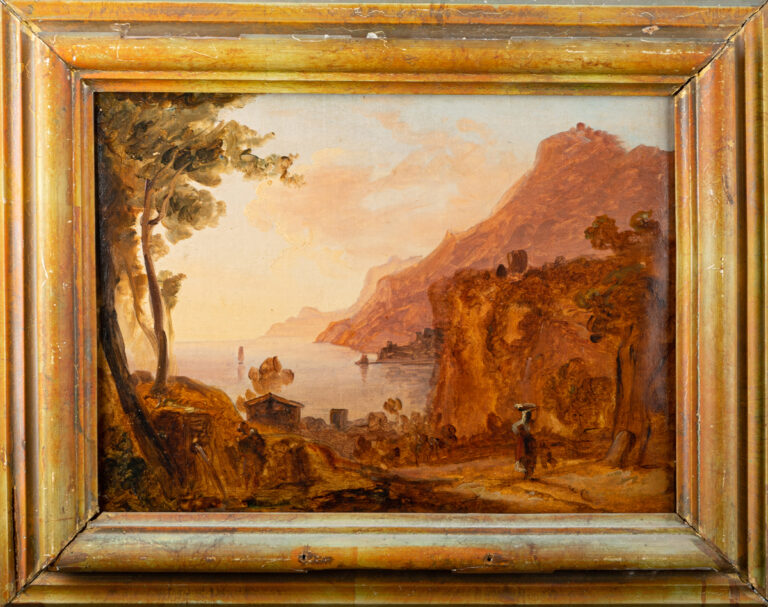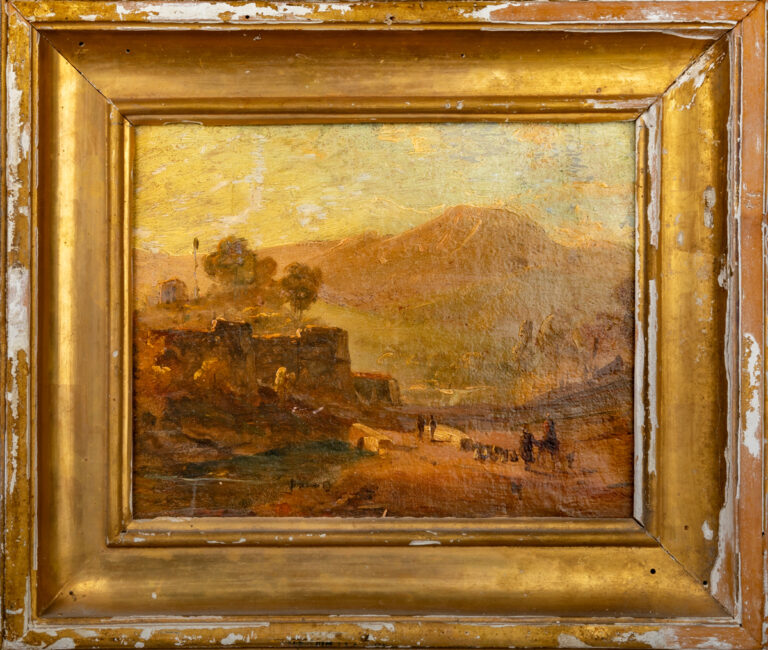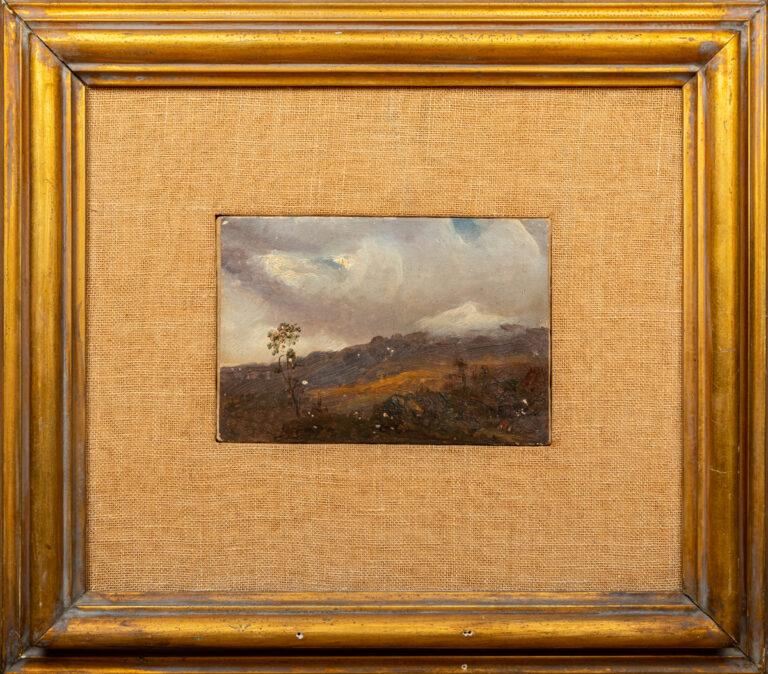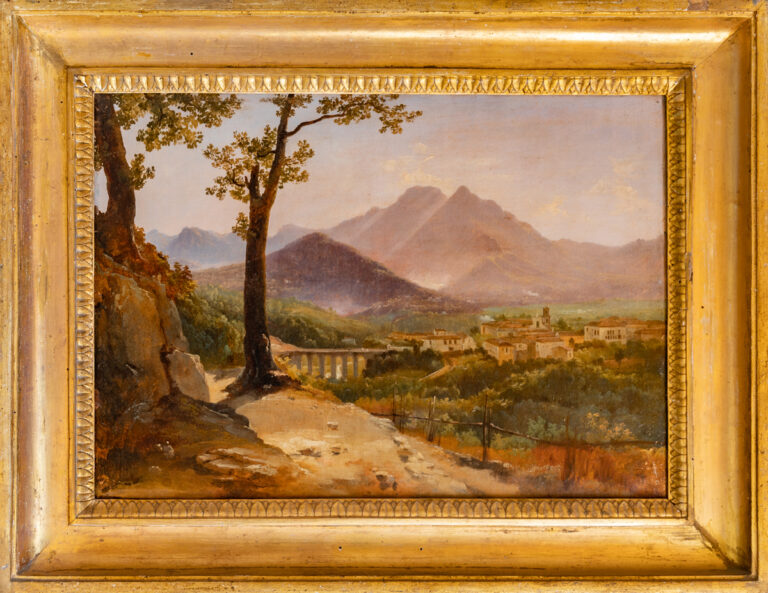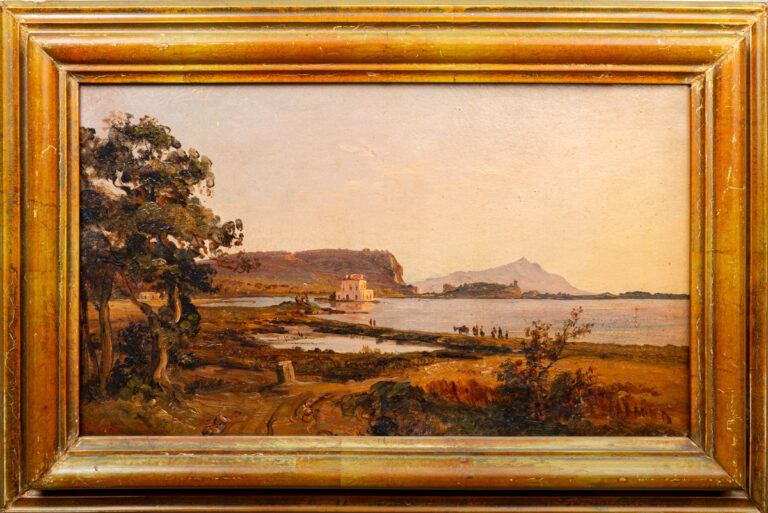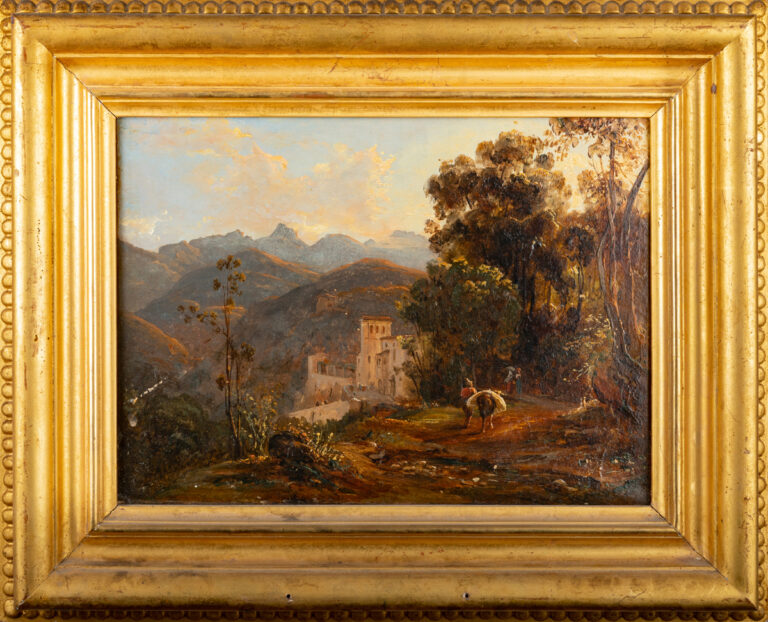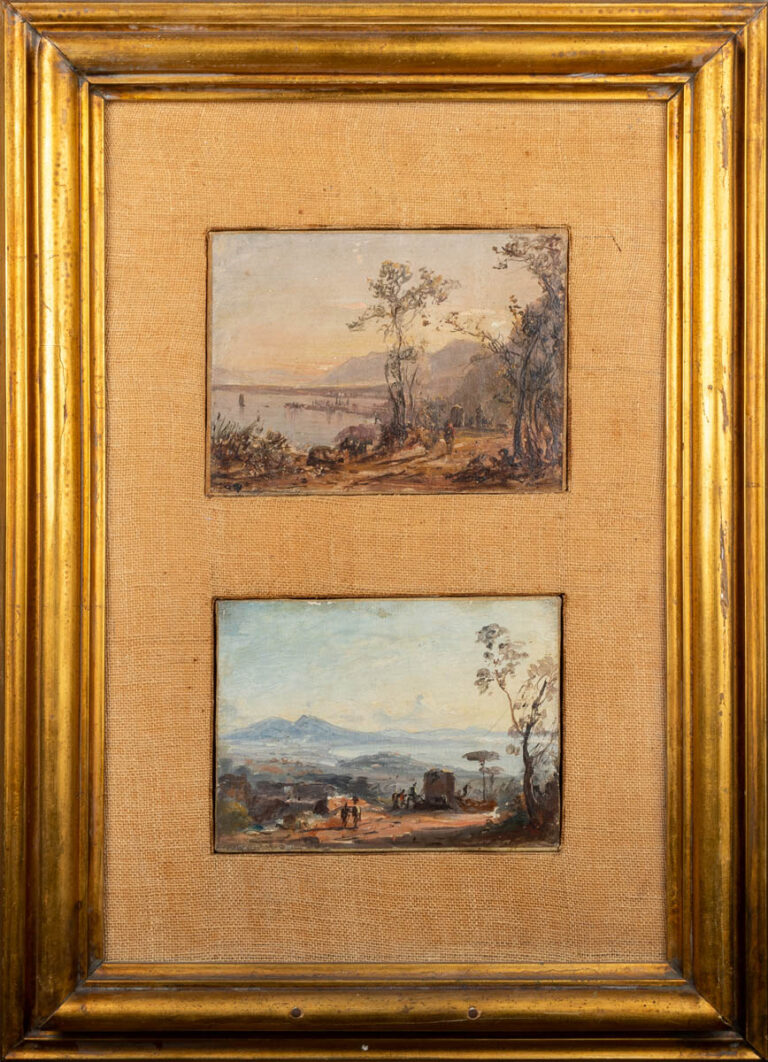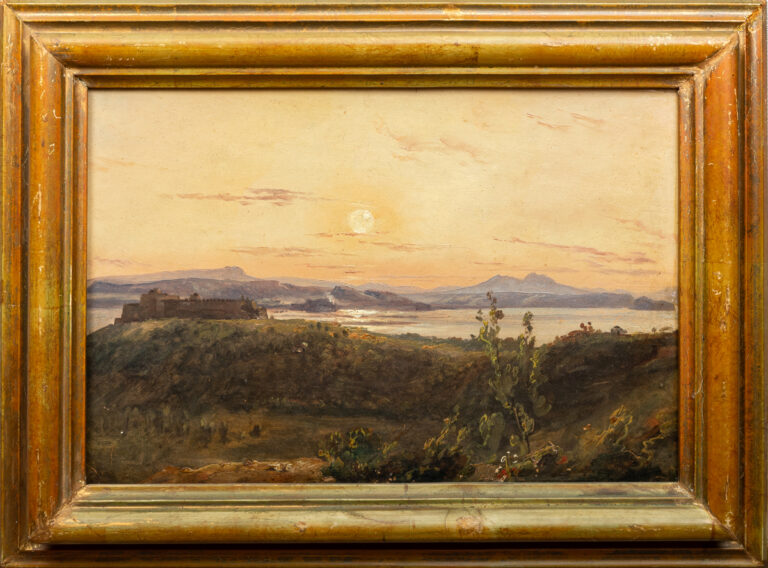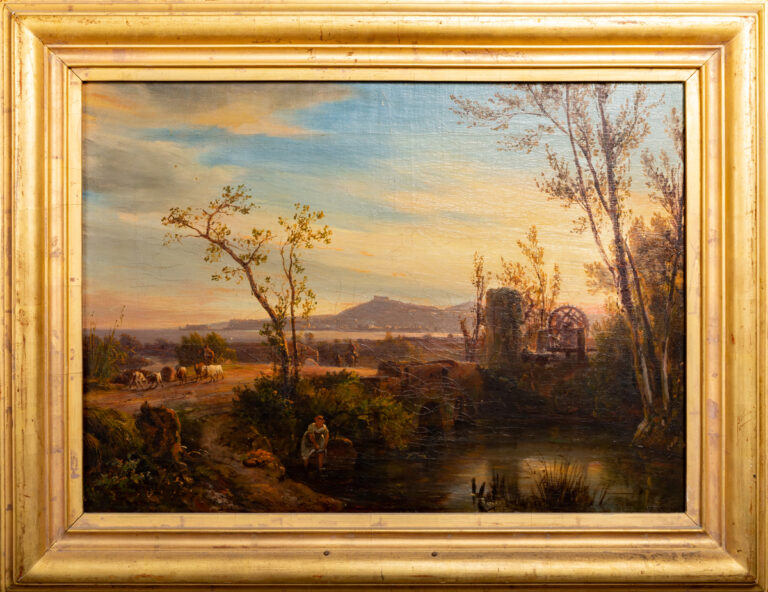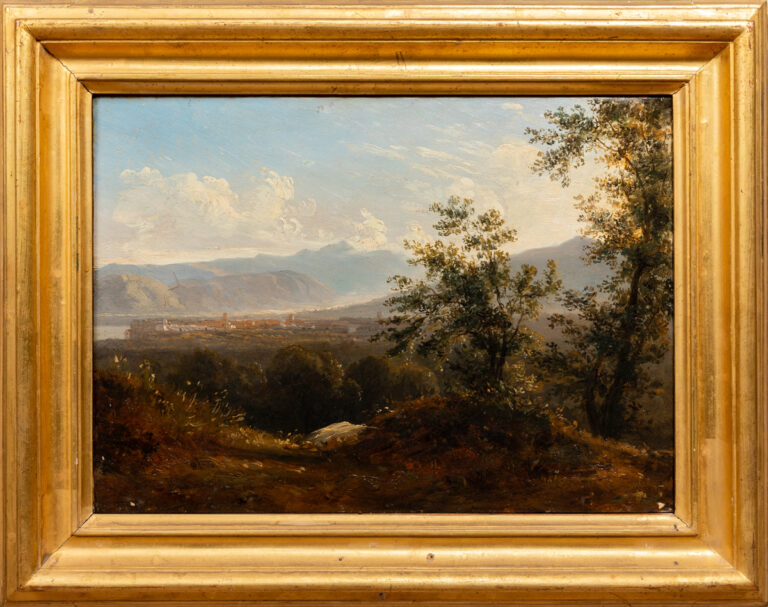Room 19
The Posillipo School
The Scuola di Posillipo was a long and fortunate episode of landscape painting that was part of the Grand Tour, the cultural journey that European intellectuals and artists made to Italy starting with the Enlightenment and lasted, with all its variations and transformations, until the end of the 19th century.
The intellectual European 'fashion' of the Grand Tour prompted many foreign travellers to visit Italy between the 17th and 19th centuries. Among them was the Dutch Vedutist painter Anton Smink Pitloo, who - fascinated by the beauty of the places and captured by the warmth of the Mediterranean light - started a new pictorial current known as the Posillipo School.
A school, the Posillipo School, inspired by Monet's technique of open-air reproduction, founded a new pictorial trend linked to the beauty of our land: the open-air landscape reproduction of views of Naples. The Posillipo School dovetailed with the Romantic season of the 19th century, opening the door to the renewal of the verista landscape that had its happiest results in Naples.
The local natural elements, architecture and inhabitants exerted a strong attraction on at least two generations of painters. Far from academic productions, and therefore initially despised, these small masterpieces, imbued with pulsating emotions, soon became the object of desire of the Neapolitan nobility and even the Court.
Pitloo headed the Posillipo school until 1837.
After Pitloo, Giacinto Gigante became its leader, expressing in those views the desire to capture the true, the verisimilitude, everything that strikes and bewitches the senses in those landscapes, with chromatic effects of rare, delicate, shining, almost liquid beauty, in portraying beaches, hills, corners of cities captured from the view from above. Pitloo and Gigante's successors were Teodoro Duclère, Filippo Palizzi, Raffaele Carelli and Michele Cammarano.
Theodore Duclère (Naples in 1812 - 1869)
He was born in Naples in 1812 to French parents; he attended the Neapolitan school of art at Posillipo, which had gathered around Antonio Pitloo's atelier, and became his master's most faithful pupil, whose daughter Sophia he married, inheriting part of his father-in-law's collection, which is now in the museum. In those same years he developed a deep friendship with Giacinto Gigante and together with Vianelli and Carelli, Duclère can be considered among the most delicate Neapolitan landscape painters of the first half of the 19th century.
Duclère's paintings take up the usual themes of Neapolitan vedute, with a particular fondness for views of the Sorrento coastline.
However, he gave better proof of himself in the production of small landscape studies conducted from life on individual natural motifs and characterised by striking colouristic effects of immediate optical appeal. In these works, the lesson of Pitloo is evident, which also persists in his later works, where the influence of Giacinto Gigante can also be felt in the choice of cuts and framing and especially in the more studiously illustrative tone of the description.
He died in Naples in 1869, aged only 57.
Antoon Sminck Pitloo (Arnheim 1790 - Naples 1837)
He began studying drawing and painting as a boy in his native Arnhem, and continued his studies first in Paris, thanks to a scholarship offered to him by Louis Bonaparte, then in Italy, in Rome, an obligatory stop on every grand tour. He then came to Naples where he became a teacher of Landscape at the Royal Institute of Fine Arts and where he founded the 'School of Posillipo'.
The novelty ascribable to Pitloo's painting lies in his definitive departure from the purely realistic and illustrative rendering and from traditional landscape painting, moving towards a decidedly romantic observation of the naturalistic datum, characterised by a sensitive attention to the vibrations of light and colour and the presence of vivid personal suggestions deriving from direct observation of places. Another innovation introduced by Pitloo was the use of the innovative technique of oil painting on paper mounted on canvas or cardboard.
Inspired by the beauty of the landscape and Neapolitan customs, he was able to capture and pass on to his pupils the atmospheric values of nature, asserting himself with a personal, rapid, luminous brushstroke.
Pitloo, died on 22 June 1837, at the age of 47, prematurely struck down by cholera. He was buried in Naples, in the Protestant cemetery.
Paintings exhibited Theodore Duclère
-
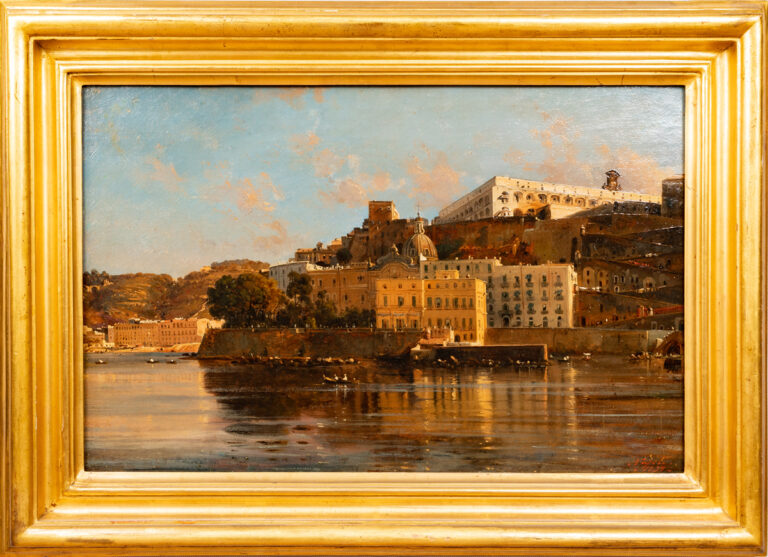
- Naples: Casino and royal grove at Chiatamone, 1839 oil on paper glued on canvas; 280 x 435 mm Inscription: Naples / 1839, bottom right
-
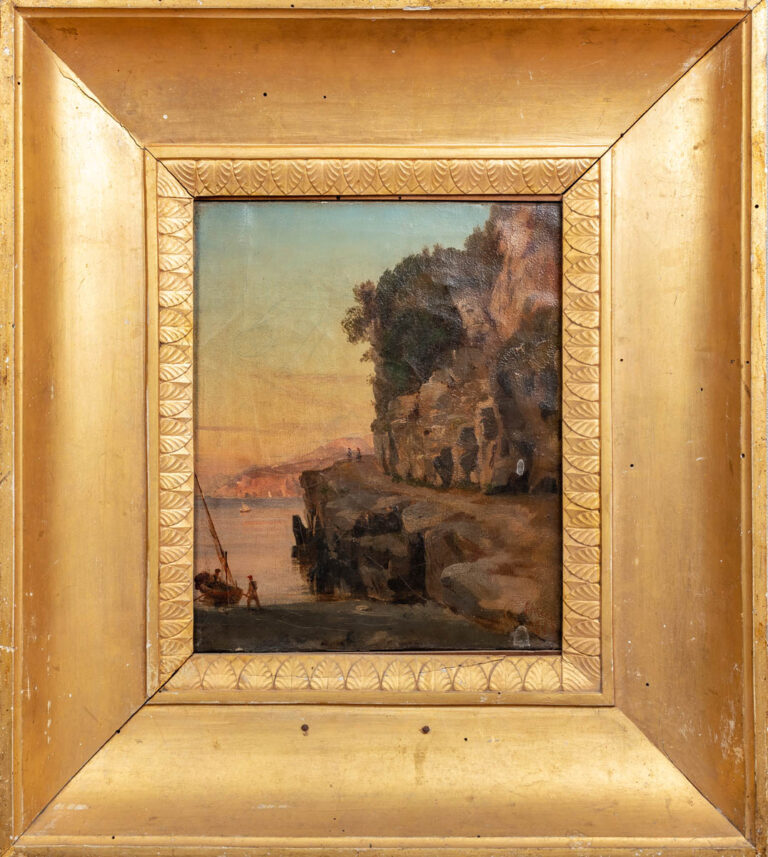
- Tonnarella beach in Sorrento, 1857 oil on canvas; 270 x 230 mm Inscriptions: Sorrento / 1857, bottom right
-
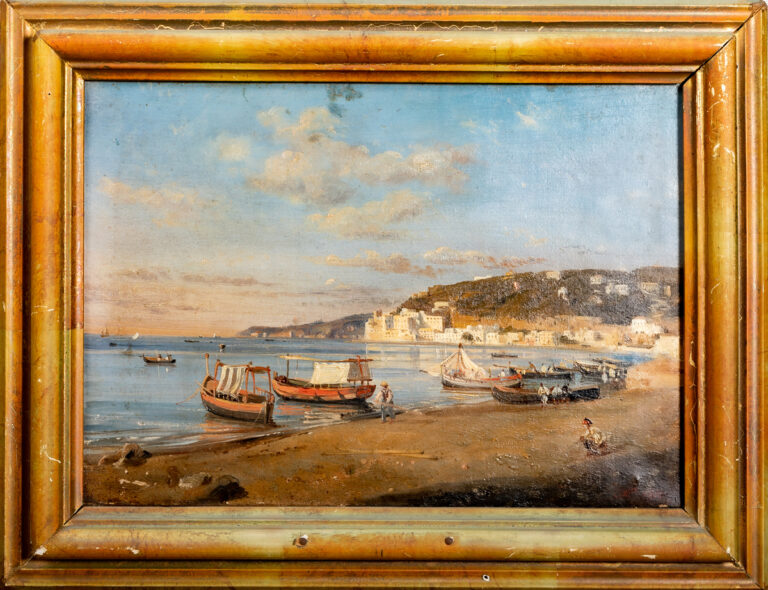
- Naples: boats and fishermen at Mergellina, 1837 oil on paper glued on canvas; 240 x 245 mm Inscription: No. 1837, bottom right
-
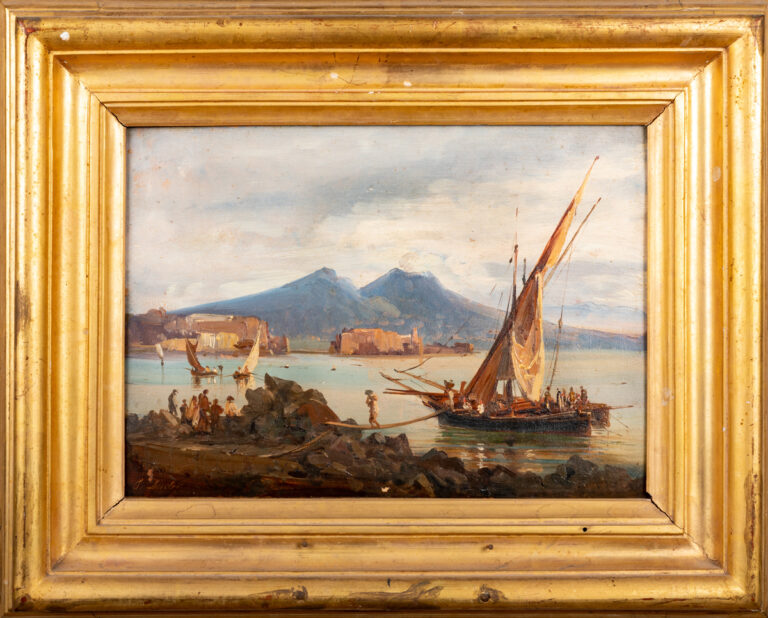
- Naples from Mergellina oil on paper glued on canvas; 185 x 260 mm Inscriptions: T. Ducler, bottom left
-
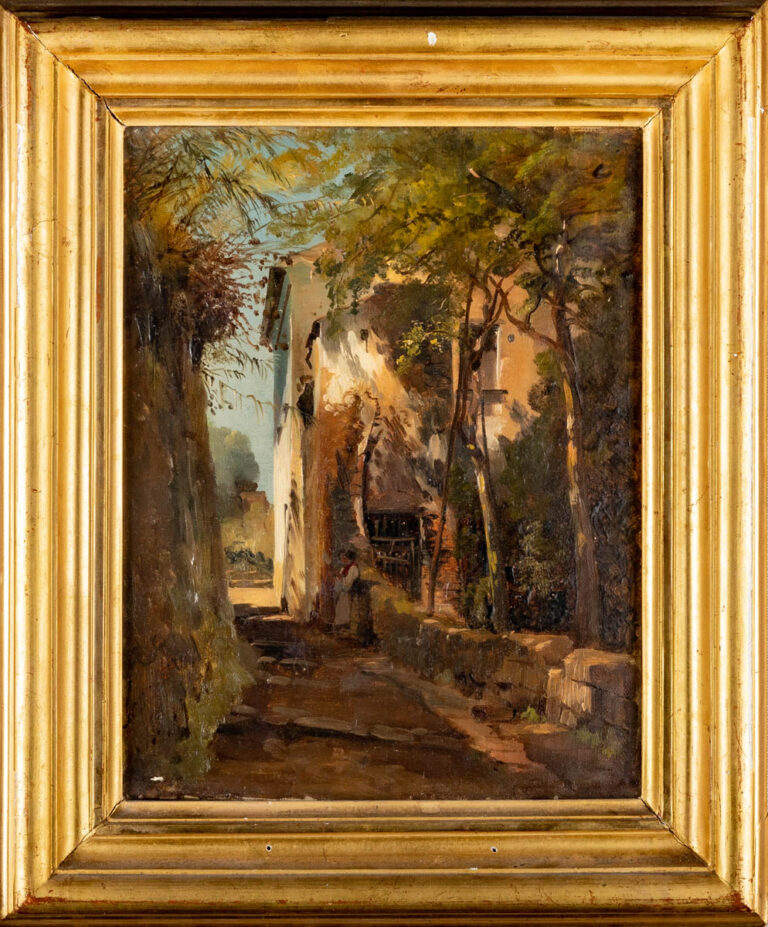
- Road in the Sorrento hills, 1857 oil on canvas; 270 x 215 mm Inscriptions: Sorrento / 1857 / Duclere, bottom left
-
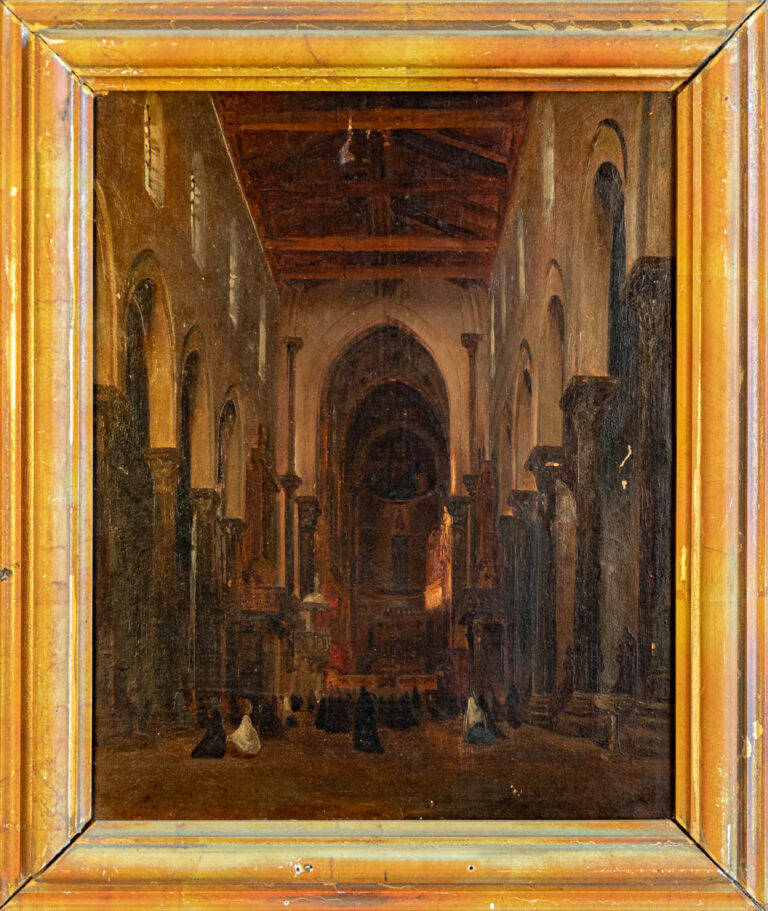
- Interior of Cefalù Cathedral oil on paper glued on canvas; 370 x 300 mm Inscription: Cefalù, bottom right
